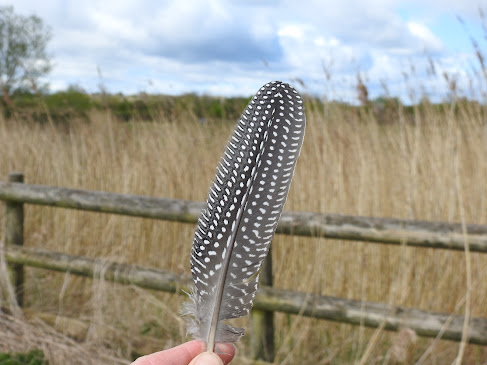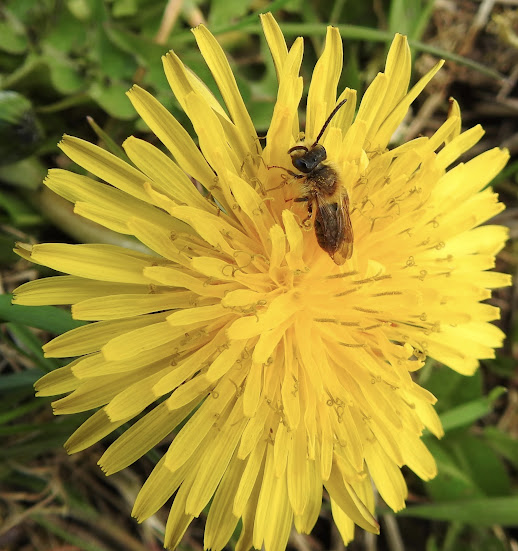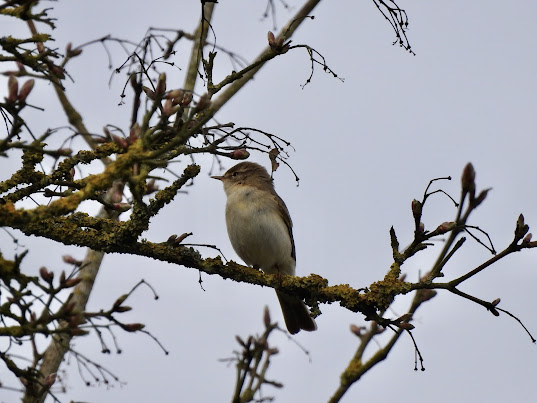The chilly weather of the last ten days continued today. I completed the normal circuit at Morton Bagot and counted singing birds diligently. There were no new arrivals but migrants are getting through in spite of the weather. Although I didn't cover all the patch, the seven singing Lesser Whitethroats heard this morning equals the site record. In addition a single Grasshopper Warbler, three singing Sedge Warblers, ten singing Chiffchaffs, ten singing Whitethroats, and two singing Willow Warblers was a decent return for the effort.
The highlight of the morning was arguably the discovery that the single pair of Lapwings on the flash field has managed to produce a chick.
 |
| Lapwing and chick |
Although it was nice to witness the event, it brings me mixed feelings. Over the last decade the breeding pairs here have reduced steadily and this may be the last pair here. The problem is probably chick survival, and I'm afraid it is more than likely that this little mite will disappear in the next few days.
On a more positive note I saw a Tawny Owl in the shed, my first here this year. Two male Stonechats in different fields also bodes well for the breeding season. A pair of Teal and the two drake Gadwalls remain on the nearest flash, and a pair of Tufted Ducks on what remains of the Kingfisher Pool were the first for weeks.
I'm hoping warmer weather on the horizon will get the spring rebooted.







.jpeg)


















